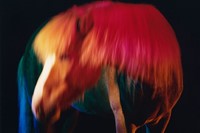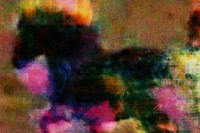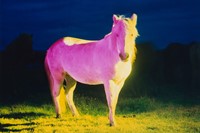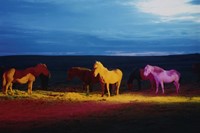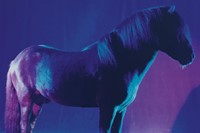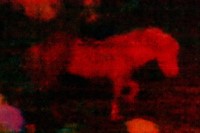The photographer’s psychedelic new book, The Horses, references everything from acid rave culture to Eadweard Muybridge’s late 19th-century stills-in-motion
Hues of neon-yellow against flashes of acid-green and stains of hot-pink. The saturated photographs of Gareth McConnell take on a painterly quality – or the euphoric ambience of a rave. The London-based photographer has repeatedly turned towards nature as a subject matter in his work, which he transforms with a psychedelic punch that conflates the natural and artificial worlds.
For his latest photobook, The Horses, McConnell travelled to Iceland on a commission for the New York Times. The resulting series offers a rare glimpse into the world of horses, presented in a wild, unbridled state. “They wanted me to create something unexpected, colourful and weird – as far away from being a National Geographic shoot as possible,” he tells AnOther. Known for its vast ice fields and plains, the Icelandic landscape lends itself perfectly to a quasi-apocalyptic backdrop. “We were in the middle of nowhere,” he continues. “It was far from being an easy experience, but somehow something magical came out of the project.”
Leaning towards the surreal and unexpected have always been at the heart of McConnell’s practice, which self-consciously refers to the history of the medium. The horse, in particular, is an important symbol in the history of art, evoking the equestrian portraits of George Stubbs, to Eadweard Muybridge’s late 19th-century stills-in-motion. “The horse is a poignant symbol,” McConnell adds. “Historically, they represented civilisation, power and status … but in this context we might think of the impending environmental catastrophe – the end of civilisation.”
McConnell’s previous projects meditated on flower imagery, a subject matter that emerged in his work in the late 1990s following the signing of the Good Friday Agreement. Like the horses, the symbolism of flowers is multi-layered, alluding to something else entirely. “I was born in Northern Ireland in 1972 at the height of the Troubles,” he says. “There was probably something like 10,000 shootings and bombings that year alone.” Working-class Protestant towns like the one McConnell grew up in began to regularly display cheerful floral arrangements – a symbol of beauty and mourning amid the ongoing sectarian conflict. “I grew up in a sectarian theme park,” McConnell says. “That struggle and history of violence has always been a part of my work.”
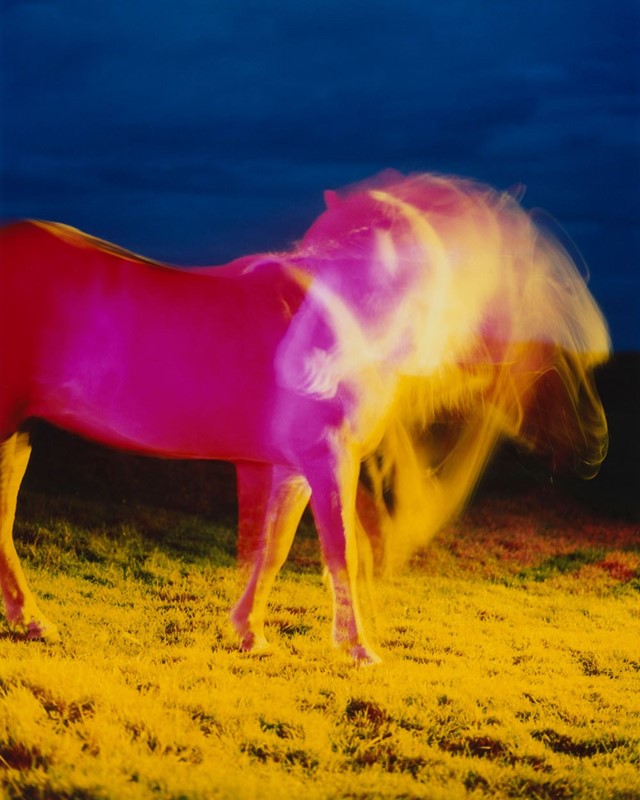
“When I was at art school my tutor Paul Seawright inspired me with his photo series Sectarian Murder. It was an image and text series created in the early 1970s … he had researched from newspaper clippings to find the places where bodies of civilians were found during the conflict,” McConnell recalls. “He used flash in a provocative way. It was when I realised that photography could play with form to tackle a serious subject matter. It doesn’t have to be straightforwardly realist.”
Dreamlike and atmospheric, McConnell’s colourful works evoke the age of acid rave culture as well as the distorted album covers of 90s dream pop, like My Bloody Valentine or the Cocteau Twins. “I’m not getting into some nostalgia trip or anything, but the 90s rave scene, the drugs and the madness that went with it left a deep imprint on me,” he confesses. As if sun-bleached, stained, and distorted, the lo-fi quality of McConnell’s photographs embrace imperfection – the mishaps and flaws that take place in the studio. “In a very simple way, I’m interested in the effects of light on a piece of film, you know what I mean? And how it won’t necessarily do what it’s meant to do.” Untamed and subject to chance, his images – like the wild horses he captures – take on a life of their own.
The Horses by Gareth McConnell is launching at Donlon Books in London on July 13 from 6.30-8.30pm.

